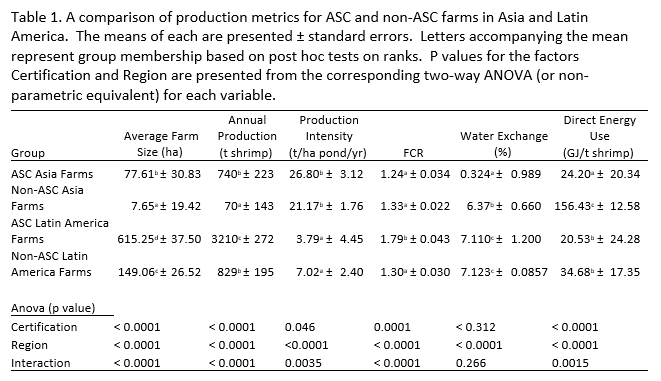A COMPARISON OF THE TECHNICAL EFFICIENCY OF AQUACULTURE STEWARDSHIP COUNCIL SHRIMP FARMS TO NON-CERTIFIED FARMS
Aquaculture will play an increasingly important role in the global seafood supply as fisheries harvests have plateaued. Shrimp are a highly valuable aquaculture commodity are produced largely for global trade. The Aquaculture Stewardship Council's shrimp certification standard is meant to serve as a market-based tool that rewards the better actors in the industry for improved performance in areas like technical efficiency, social responsibility, and traceability. The goal of this study was to compare production methodology and efficiency of farms certified to the ASC shrimp standard to farms from recent field surveys in the same geographical areas. Certified farms were statistically larger on average (four times larger in Latin America and 10 times larger in Asia). Farms in Asia operate at higher production intensities but no differences were seen due to certification status. No differences were seen in the FCR of farms in Asia, but ASC farms in Latin America had the higher average FCRs than non-certified farms (1.79 vs. 1.33). ASC farms in Asia used drastically less water exchange than other types of farms, and were more energy efficient than other farms as well. These findings were used to make recommendations for the ASC standard and certification standards in general, including a greater emphasis on requirements for limits on efficiency-based metrics beyond simply reporting the outcome of the calculation.
